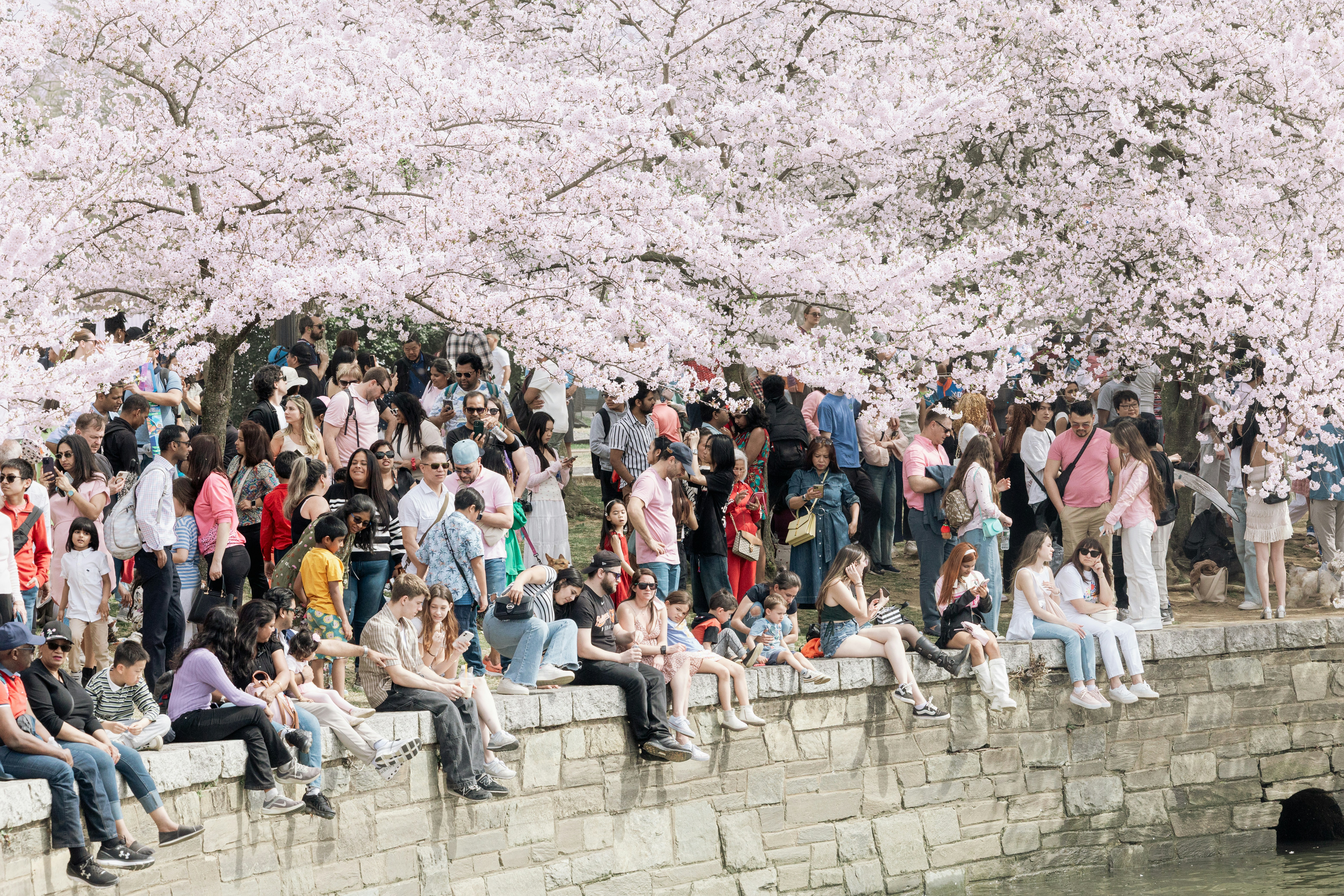Pretty, pink petals are scattered around the Tidal Basin of Washington DC where cherry blossom season has reached peak bloom. But have you ever wondered why the US capital becomes adorned with these iconic blossoms each spring?
In 2025, Washington DC’s cherry blossoms reached peak bloom on March 28, according to the National Park Service. Peak bloom is defined as the day when more than 70 percent of the Yoshino Cherry (Prunus × yedoensis) blossoms in the National Mall are open.
This timing is fairly typical, as peak bloom generally occurs in early spring between late March and early April, depending on weather conditions. However, unusual temperatures can shift the timing significantly. In the past, peak bloom has occurred as early as March 15 (in 1990) and as late as April 18 (in 1958).
The capital city’s Cherry Blossom Festival has a deep connection to the Japanese tradition of hanami, or flower viewing. Since cherry blossoms (also known as Sakura) bloom only once a year and last for just a couple of weeks, the event is cherished as a time to reflect on the fleeting beauty of flowers, nature, and life itself. Their arrival also coincides with the start of the Japanese school and fiscal year, making them a powerful symbol of new beginnings.
This tradition has been practiced in Japan for centuries, but it arrived in the US in the early 20th century.
In 1909, Japan donated 2,000 cherry trees to the US as a gesture of goodwill, aiming to strengthen diplomatic ties and cultural exchange. At the time, both nations were seeking closer relations while also navigating tensions over competing interests in the Pacific.

Crowds soak up the sights of the National Cherry Blossom Festival.
Image credit: Connor Gan/Unsplash
The idea for the cherry tree gift first came from Eliza Scidmore, an American writer who visited Japan many times and grew to love the culture. Inspired by the country’s flowery blossoms, she advocated for their introduction to Washington DC. The idea gained momentum when she corresponded with First Lady Helen Taft, who had also spent time in Japan, and embraced the vision. With the support of Tokyo’s Mayor, Yukio Ozaki, the plan became a reality, culminating in the historic delivery of the trees across the Pacific.
The well-meaning gift didn’t go to plan, though. The trees docked in Seattle in December 1909 and then were transported across the US, arriving at the capital in 1910. However, the US Department of Agriculture found that the trees were diseased and infested with pests, so they were ordered to be burnt.
To save face, Tokyo Mayor Ozaki and city officials doubled down a sent a second donation of 3,020 trees. They arrived in Washington DC in March 1912 and were planted around the Tidal Basin, and later the East Potomac Park.
The cherry trees didn’t exactly help Japanese-US relations over the following 40 years – to put it very, very lightly. However, they re-established their relationship in the post-war era and the cherry blossom exchange is still going strong.
In April 2024, Japan gifted the US another 250 cherry trees to replace more than 100 that were set to be disturbed during construction around the Tidal Basin. The Japanese prime minister, Fumio Kishida, commented: “Just as the local residents have cherished and protected these cherry trees, the Japan-U.S. relationship has been supported and nurtured by the many people who love each other’s country.”
Source Link: DC’s Cherry Blossoms Are In Peak Bloom, But Why Is The Capital Covered In The Flowering Trees?